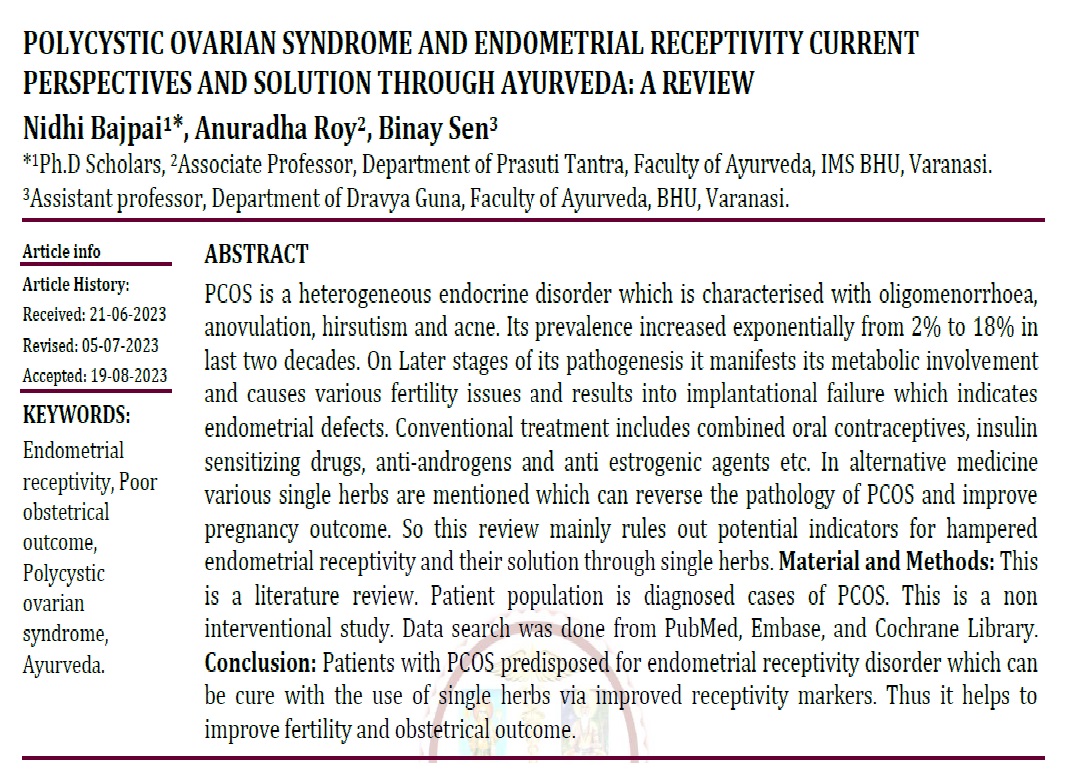Polycystic Ovarian Syndrome and Endometrial Receptivity Current Perspectives and Solution Through Ayurveda
DOI:
https://doi.org/10.47070/ayushdhara.v10i4.1299Keywords:
Endometrial receptivity, Poor obstetrical outcome, Polycystic ovarian syndrome, AyurvedaAbstract
PCOS is a heterogeneous endocrine disorder which is characterised with oligomenorrhoea, anovulation, hirsutism and acne. Its prevalence increased exponentially from 2% to 18% in last two decades. On Later stages of its pathogenesis it manifests its metabolic involvement and causes various fertility issues and results into implantational failure which indicates endometrial defects. Conventional treatment includes combined oral contraceptives, insulin sensitizing drugs In alternative science various single herbs are mentioned which can reverse the pathology of PCOS and improve pregnancy outcome. So this review mainly rules out potential indicators for hampered endometrial receptivity and their solution through single herbs. Material and Methods: This is a literature review. Patient population is diagnosed cases of PCOS. This is a non interventional study. Data search was done from PubMed, Embase, and Cochrane Library. Conclusion: Patients with PCOS predisposed for endometrial receptivity disorder which can be cure with the use of single herbs via improved receptivity markers. Thus it helps to improve fertility and obstetrical outcome.
Downloads

Downloads
Published
Issue
Section
License
Copyright (c) 2023 AYUSHDHARA

This work is licensed under a Creative Commons Attribution-NonCommercial-ShareAlike 4.0 International License.


